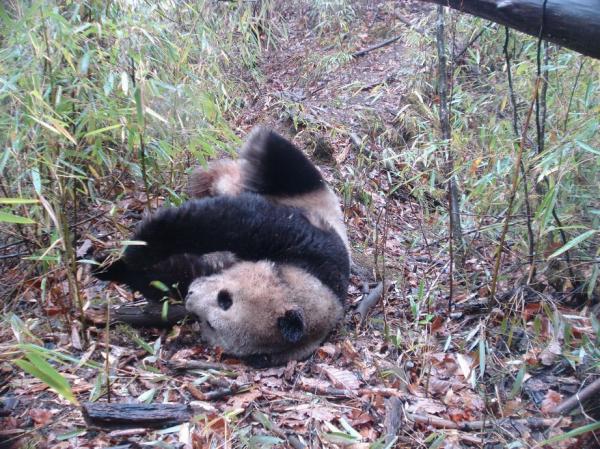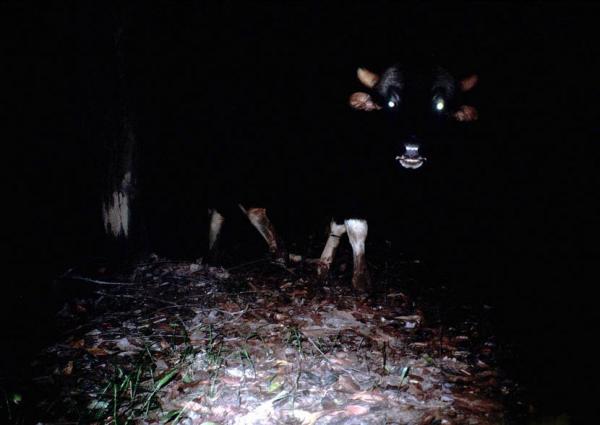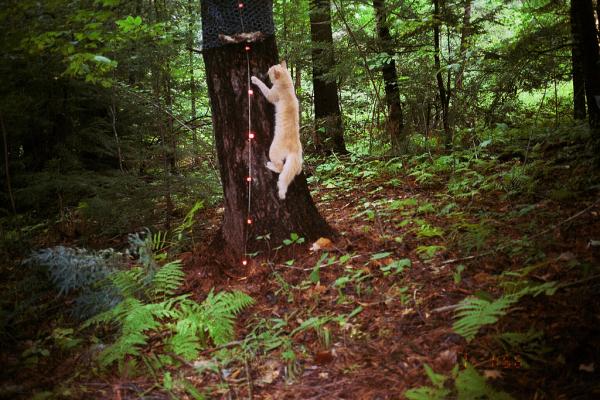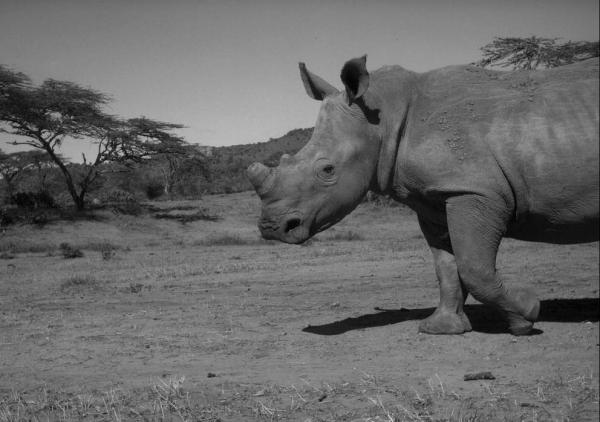
Camera Trapped: Wonderful and Weird Wildlife Around the World
Giant Panda

(Ailuropoda melanoleuca)
A giant panda takes a roll in the leaves.
The giant panda's habitat is limited to a region of temperate bamboo forests in south-central China. The bamboo-loving bears are endangered, and there are perhaps as few as 2,500 mature pandas left in the wild.
Click through for more pictures of wild creatures, both familiar and strange, captured by camera traps set up from China to Kenya to Virginia, and collected on Smithsonian Wild, a new website from the storied research institute. The cameras, triggered by motion and heat, capture the animals unawares, going about their lives in their natural environments.
Jaguar

(Panthera onca)
A jaguar slinks toward the camera in the Peruvian Amazon.
The largest cats of the Americas, jaguars are listed as "near threatened" by the International Union for the Conservation of Nature, the organization that qualifies the status of the world's animal species.
Jaguars are solitary animals, and only come together when it's time to mate. They prey upon a wide range of animals, from cattle to reptiles and fish.
Gaur

(Bos frontalis)
Surprise! This gaur, essentially a kind of wild cow, was snapped in the Khao Yai National Park, Thailand.
Gaur are native to southeast Asia. The large animals roam grassy areas and forests in herds that range from under 10 individuals to as many as 40. Gaur are shy, and steer clear of humans. Although not naturally so, some guar turn entirely nocturnal in areas where their habitats are severely disturbed.
Giant Anteater

(Myrmecophaga tridactyla)
This giant anteater was photographed in the Peruvian Amazon.
Giant anteaters are solitary creatures, native to Central and South America. Although they are nearly blind, an excellent sense of smell helps the strange mammals sniff out the main staples of their diet: ants and termites. Because the tiny insects aren't particularly nutritious, giant anteaters must move slowly to conserve energy and sleep for up to 16 hours a day, wrapping their voluminous tails around their bodies like a blanket.
Domestic Cat

(Felis catus)
Camera traps don't discriminate: even the most ordinary creatures can trigger the camera and be photographed. This same orange tabby was snapped two dozen times by an Adirondack Mountains camera project.
Golden Snub-nosed Monkey

(Rhinopithecus roxellana)
These adorable little guys were caught by the camera traps set up in giant panda reserves in China. And like pandas, these endangered primates have a very limited habitat in west-central China. Elusive yet very social, golden snub-nosed monkeys live in forests that are blanketed with snow for up to half the year.
Black Rhinoceros

(Diceros bicornis)
Black rhinos are critically endangered. Native to southern eastern Africa, populations of the huge mammals were severely depleted by poaching in the 20th century. Their numbers dropped by as much as 90 percent over the course of about six decades, reaching record lows of just over 2,000 individuals in the early- to mid-nineties. Since then, their numbers have been slowly increasing.
They are characteristically a curious species, and can be aggressive toward humans and other animals. However, these giant beasts are vegetarians, using their prehensile lips to feed on leaves and twigs.
Get the world’s most fascinating discoveries delivered straight to your inbox.
 Live Science Plus
Live Science Plus





